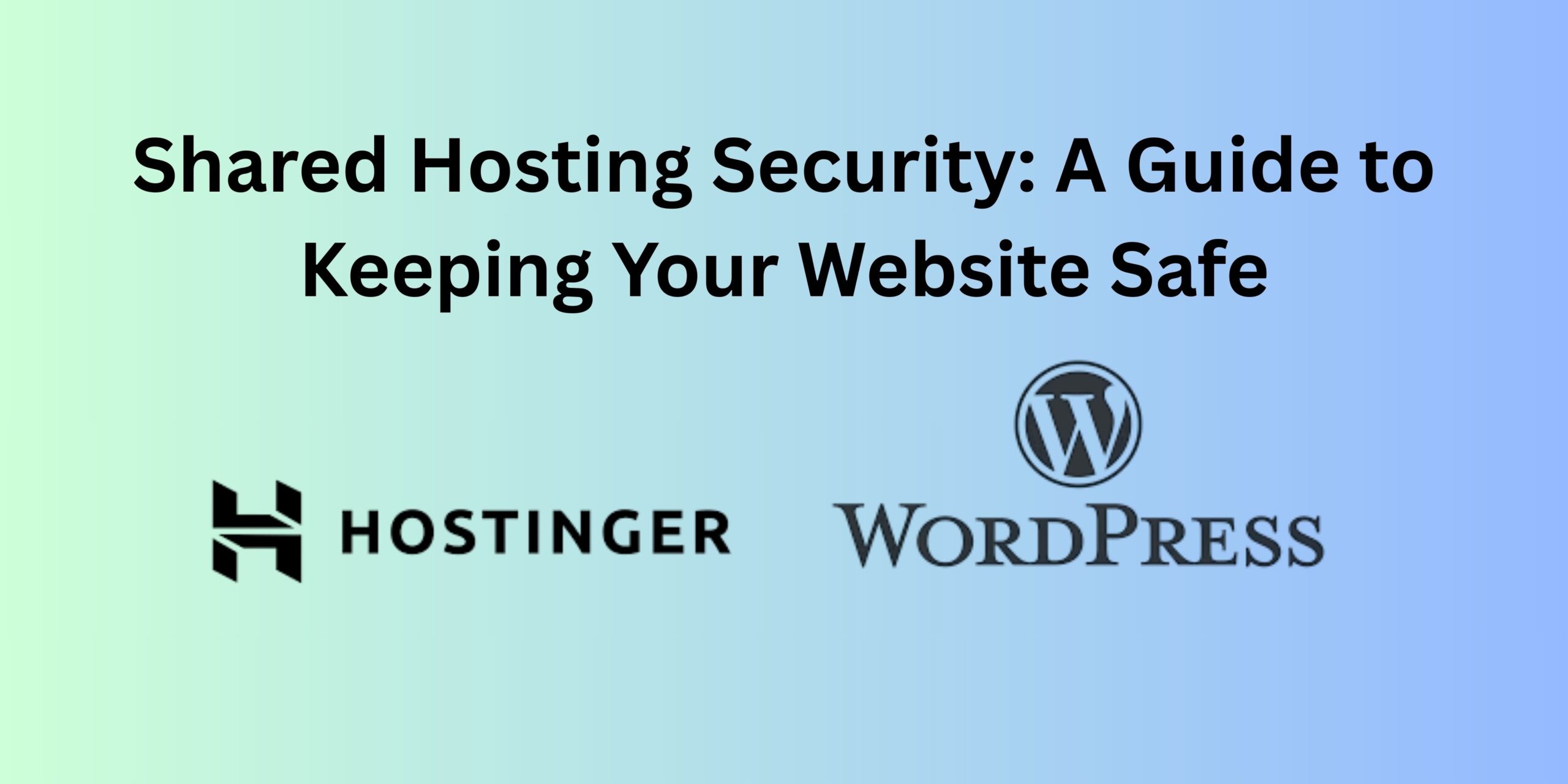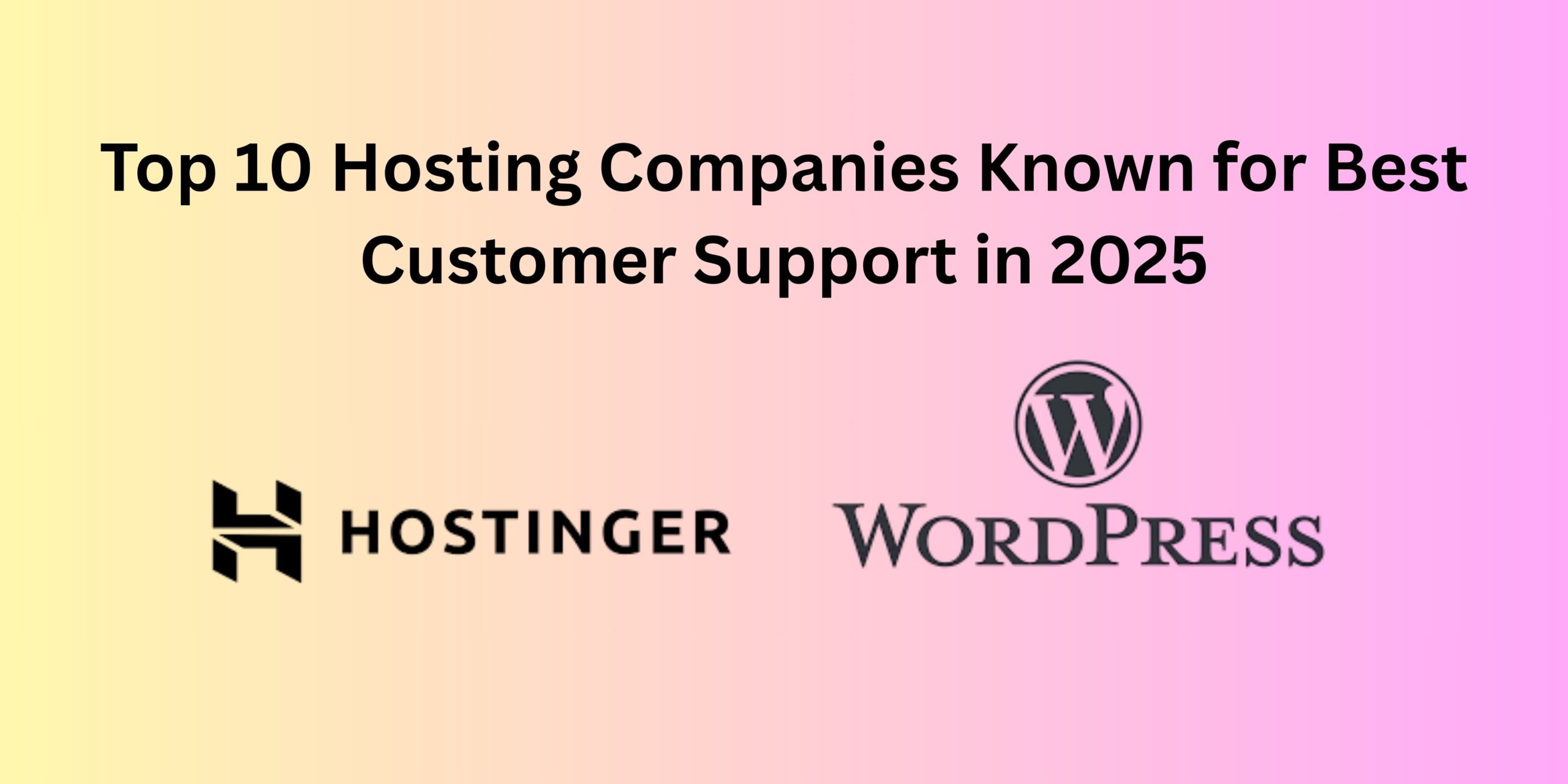In today’s digital landscape, securing your website is paramount, especially when using shared hosting, where multiple websites share a single server’s resources. While shared hosting is an affordable and beginner-friendly option, its shared nature introduces unique security challenges. A single compromised site on the server could potentially affect others, making robust security practices essential. This comprehensive guide provides actionable steps to protect your website, drawing insights from industry leaders like HostAdvice, HostingAdvice, and WebsitePlanet, and includes additional strategies to fortify your site’s defenses.
Understanding Shared Hosting Security Risks
Shared hosting involves multiple websites coexisting on the same server, sharing resources like CPU, memory, and storage. This setup, while cost-effective, introduces specific vulnerabilities:
- Cross-Site Contamination: A security breach on one website could spread to others on the same server if proper isolation isn’t enforced.
- Outdated Software: Unpatched content management systems (CMS), themes, or plugins are prime targets for hackers exploiting known vulnerabilities.
- Weak Credentials: Simple or reused passwords can be easily cracked, granting attackers access to your site or hosting account.
- Limited Server Control: Shared hosting users typically lack access to server-level configurations, relying on the provider for core security measures.
- Resource Overload: Excessive resource usage by one site can slow down or destabilize the server, potentially exposing vulnerabilities.
Understanding these risks empowers you to implement targeted strategies to safeguard your website effectively.
Best Practices for Securing Your Shared Hosting Website
1. Choose a Reputable Hosting Provider
The foundation of website security starts with selecting a trusted hosting provider. Look for hosts that prioritize security with features like:
- Automated Backups: Daily backups ensure you can restore your site quickly after a breach or data loss.
- SSL/TLS Certificates: Free or premium SSL certificates encrypt data between your website and visitors, enhancing security and SEO.
- Advanced Server Protections: Features like Web Application Firewalls (WAF), DDoS protection, and malware scanning are critical.
HostingAdvice emphasizes providers that integrate Cloudflare or similar CDNs to mitigate DDoS attacks and improve site performance. Research user reviews on platforms like HostAdvice to identify hosts with a strong security track record.
2. Keep Software Updated
Outdated software is a leading cause of website vulnerabilities. Regularly update your CMS (e.g., WordPress, Joomla, Drupal), themes, plugins, and any scripts running on your site. HostAdvice recommends enabling automatic updates for your CMS and plugins to ensure timely patches. If your hosting provider manages server-side software (e.g., PHP, MySQL), verify that they maintain up-to-date versions to prevent exploits.
3. Use Strong Passwords and Two-Factor Authentication
Weak passwords are an open door for attackers. Create complex passwords with at least 12 characters, combining uppercase and lowercase letters, numbers, and special characters. Avoid reusing passwords across sites. WebsitePlanet strongly advocates for enabling two-factor authentication (2FA) on your hosting account, CMS admin panel, and any associated email accounts to add an extra layer of protection.


4. Implement SSL/TLS Encryption
An SSL certificate is essential for encrypting sensitive data, such as login credentials and payment information, and for building visitor trust with the HTTPS protocol. Most reputable shared hosting providers, as noted by HostingAdvice, offer free SSL certificates through Let’s Encrypt or proprietary solutions. Ensure your site redirects all traffic to HTTPS and regularly check your SSL certificate’s validity.
5. Regular Backups
Frequent backups are your safety net against data loss from hacks, server failures, or human error. Schedule automated backups through your hosting provider’s control panel or use CMS plugins like UpdraftPlus for WordPress. HostAdvice advises storing backups in a secure, off-site location, such as cloud storage services like Google Drive or Dropbox, and testing restores periodically to confirm their reliability.
6. Secure File Permissions
Incorrect file permissions can expose your website’s files to unauthorized access. Set file permissions to 644 (read/write for the owner, read-only for others) and directories to 755 (read/write/execute for the owner, read/execute for others). Never use 777 permissions, as they grant excessive access. HostingAdvice suggests using your hosting control panel or an FTP client like FileZilla to regularly audit and adjust permissions.
7. Leverage Security Plugins and Tools
For CMS-based websites, security plugins are invaluable. For WordPress, tools like Wordfence, Sucuri, or iThemes Security can monitor for malware, block brute-force attacks, and harden your site. WebsitePlanet highlights hosting providers like Rumahweb, which offer built-in security features such as LiteSpeed WebServer and optimized plugin environments to enhance performance and protection.
8. Monitor and Scan for Malware
Proactive malware scanning can catch threats before they escalate. Many shared hosting providers include free malware scanning and removal tools in their plans. HostAdvice recommends scheduling weekly scans and enabling real-time monitoring to detect suspicious activity, such as unauthorized file changes. Third-party tools like SiteLock or Sucuri can provide additional scanning capabilities if your host’s tools are limited.
9. Limit User Access
Minimize the number of users with access to your website’s admin panel or hosting account. Use role-based permissions in your CMS to restrict what users can do—editors shouldn’t have admin-level access, for example. HostingAdvice’s surveys indicate that businesses implementing strict access controls reduce the risk of internal breaches by up to 30%. Regularly review user accounts and revoke access for former employees or contributors.
10. Educate Yourself and Your Team
Knowledge is a powerful defense against cyber threats. Stay informed about emerging threats like phishing, ransomware, and brute-force attacks through resources on HostAdvice and WebsitePlanet. Train your team to recognize phishing emails, avoid unsecured Wi-Fi for sensitive tasks, and follow security best practices. HostingAdvice’s blog offers guides on identifying common attack vectors, which can be shared with your team for ongoing education.


11. Harden Your CMS Configuration
Beyond plugins, configure your CMS for maximum security. For WordPress, consider:
- Disabling File Editing: Prevent attackers from modifying theme or plugin files by adding define(‘DISALLOW_FILE_EDIT’, true); to your wp-config.php file.
- Protecting Configuration Files: Restrict access to sensitive files like wp-config.php or .htaccess using server rules.
- Hiding Login Pages: Use plugins to change your admin login URL (e.g., from /wp-admin to a custom path) to deter brute-force attacks.
WebsitePlanet notes that these tweaks significantly reduce the attack surface of CMS-based sites.
12. Enable Server-Side Security Features
While shared hosting limits server-level access, many providers offer configurable security options. Enable features like mod_security (a server-side firewall) or IP blocking for suspicious traffic. HostingAdvice highlights that hosts using cPanel often include tools like Imunify360, which provides automated threat detection and mitigation.
13. Use Secure FTP (SFTP)
When transferring files to your server, use Secure File Transfer Protocol (SFTP) instead of standard FTP, which transmits data in plain text. Most modern hosting providers support SFTP, as noted by HostAdvice. Ensure your FTP client is configured to use SFTP and disable anonymous FTP access to prevent unauthorized uploads.
Addressing Shared Hosting-Specific Concerns
Shared hosting’s shared environment requires extra vigilance:
- Account Isolation: Choose a provider that isolates accounts using technologies like containerization or CloudLinux. HostingAdvice notes that this prevents cross-site contamination, ensuring a hacked site doesn’t compromise others.
- Resource Monitoring: Overloaded servers can degrade performance and expose vulnerabilities. Use your hosting control panel to monitor CPU and memory usage, and contact your provider if you notice unusual spikes.
- Avoid Untrusted Plugins or Themes: Malicious code in third-party plugins or themes can compromise your site. Stick to reputable sources like the WordPress Plugin Directory or ThemeForest, and check reviews before installing.
Advanced Security Measures
For those seeking extra protection, consider these advanced strategies:
- Content Security Policy (CSP): Implement a CSP to control which scripts and resources can run on your site, reducing the risk of cross-site scripting (XSS) attacks.
- Regular Security Audits: Conduct periodic audits using tools like WPScan (for WordPress) or online vulnerability scanners to identify weaknesses.
- Intrusion Detection Systems (IDS): Some hosts offer IDS to monitor for suspicious activity. If unavailable, third-party services like Cloudflare can provide similar functionality.
WebsitePlanet’s case studies show that sites implementing these measures experience fewer successful attacks, even in shared hosting environments.


Conclusion
Securing a website on shared hosting requires a proactive, multi-layered approach. By choosing a reputable provider, keeping software updated, using strong credentials, and leveraging tools like SSL and security plugins, you can significantly reduce risks. Stay vigilant by monitoring for malware, securing file permissions, and educating your team on best practices. Resources from HostAdvice, HostingAdvice, and WebsitePlanet offer valuable insights and reviews to guide your hosting and security decisions. With these strategies, your website can remain a safe and reliable space for your visitors.
Frequently Asked Questions (FAQs)
Q1: Is shared hosting safe for my website?
A: Shared hosting can be safe if you follow best practices like using strong passwords, enabling SSL, keeping software updated, and choosing a reputable provider with robust security features. However, the shared environment introduces risks like cross-site contamination, so account isolation and proactive monitoring are crucial.
Q2: How often should I back up my website?
A: Schedule automated daily backups through your hosting provider or CMS plugins. Store backups off-site and test restores monthly to ensure they work. Frequent backups minimize data loss in case of a breach or server failure.
Q3: What is the most important security feature to look for in a shared hosting provider?
A: Look for providers offering account isolation, automated backups, free SSL certificates, and server-side protections like firewalls and DDoS mitigation. HostingAdvice recommends checking user reviews to confirm a provider’s security reliability.
Q4: Can I use free plugins to secure my website?
A: Yes, free plugins like Wordfence or Sucuri Security for WordPress can enhance security by monitoring for malware and blocking threats. However, ensure plugins come from trusted sources, and consider premium versions for advanced features.
Q5: How do I know if my website has been hacked?
A: Signs of a hack include unexpected redirects, slow performance, suspicious files, or unauthorized admin access. Use malware scanners provided by your host or third-party tools to detect issues. Set up alerts for unusual activity, as suggested by HostAdvice.
Q6: What should I do if my shared hosting account is compromised?
A: Immediately contact your hosting provider to report the issue. Change all passwords, scan for malware, and restore your site from a clean backup. Review user access and update software to prevent further breaches.


Q7: Are free SSL certificates as secure as paid ones?
A: Free SSL certificates, like those from Let’s Encrypt, provide the same level of encryption as paid certificates for most websites. However, paid certificates may offer additional features like extended validation or warranties, as noted by WebsitePlanet.





One Reply to “Shared Hosting Security: A Guide to Keeping Your Website Safe”
Simply desire to say your article is as surprising The clearness in your post is simply excellent and i could assume you are an expert on this subject Fine with your permission let me to grab your feed to keep up to date with forthcoming post Thanks a million and please carry on the gratifying work